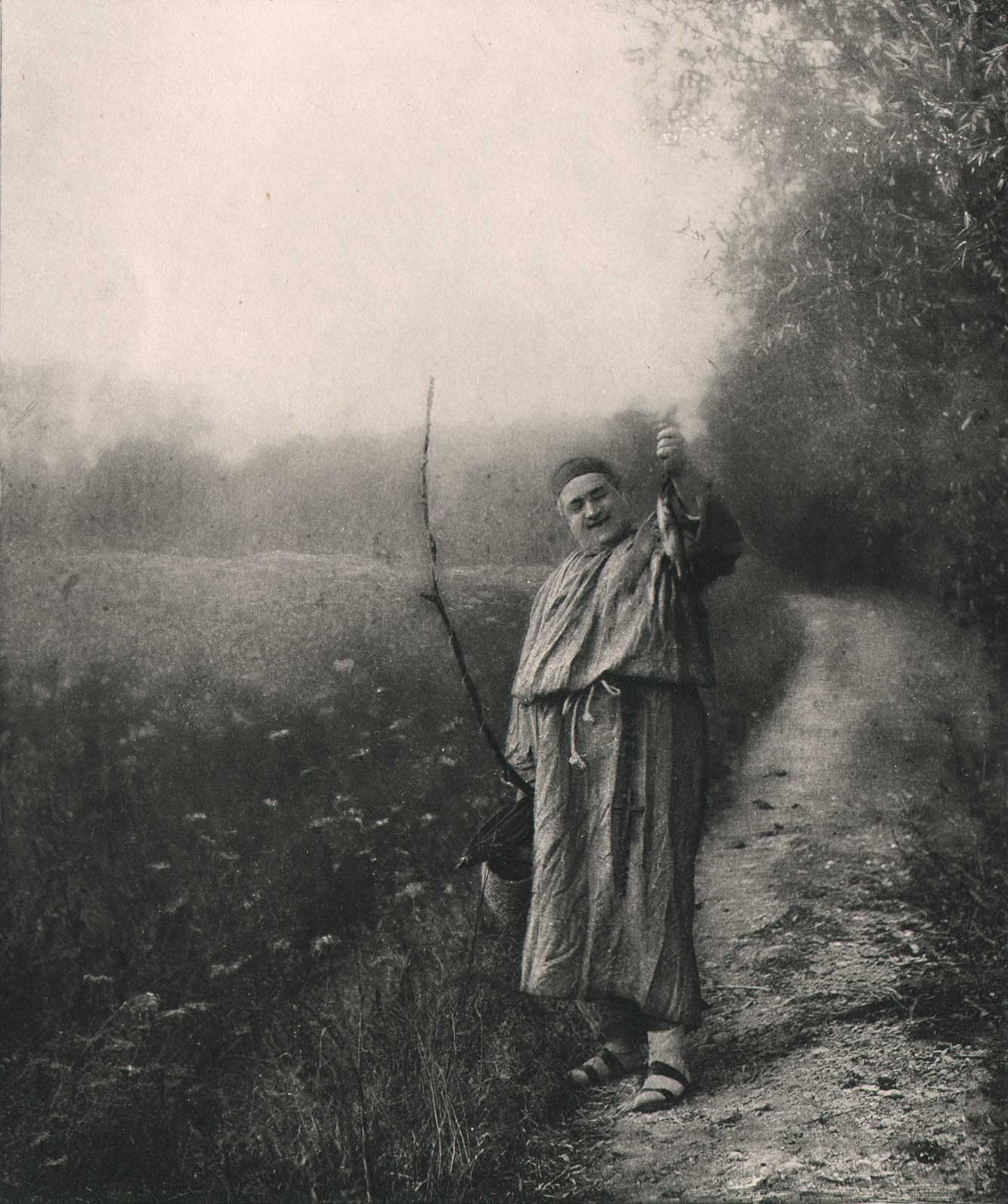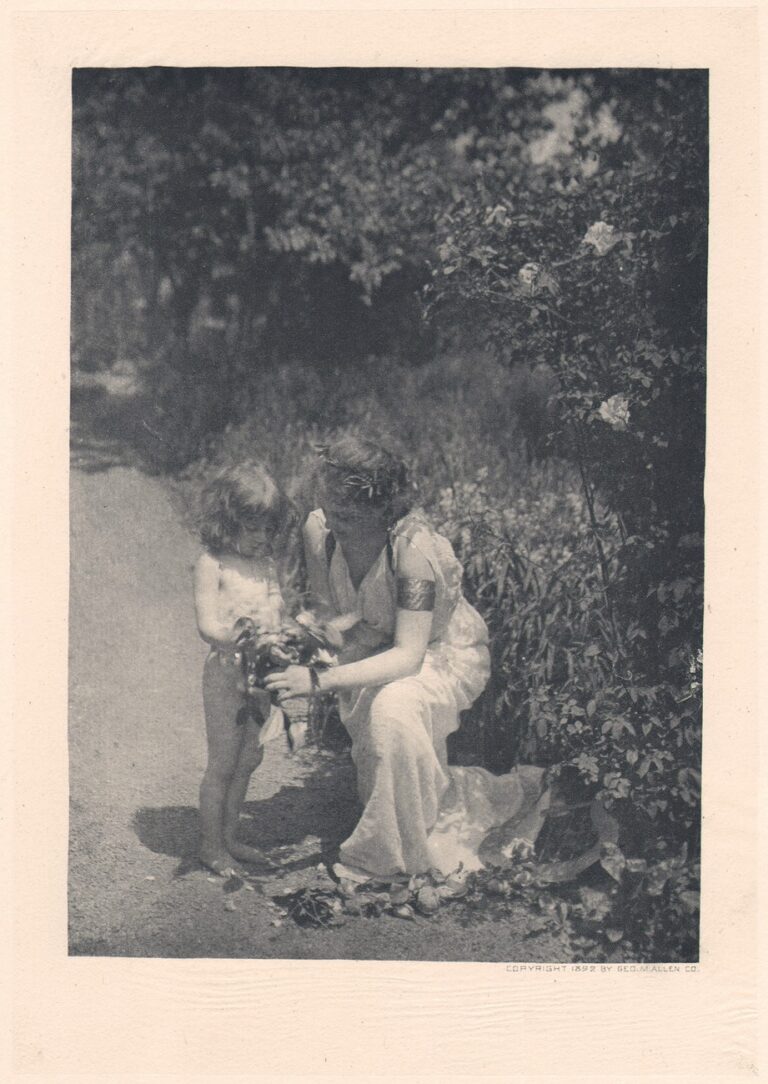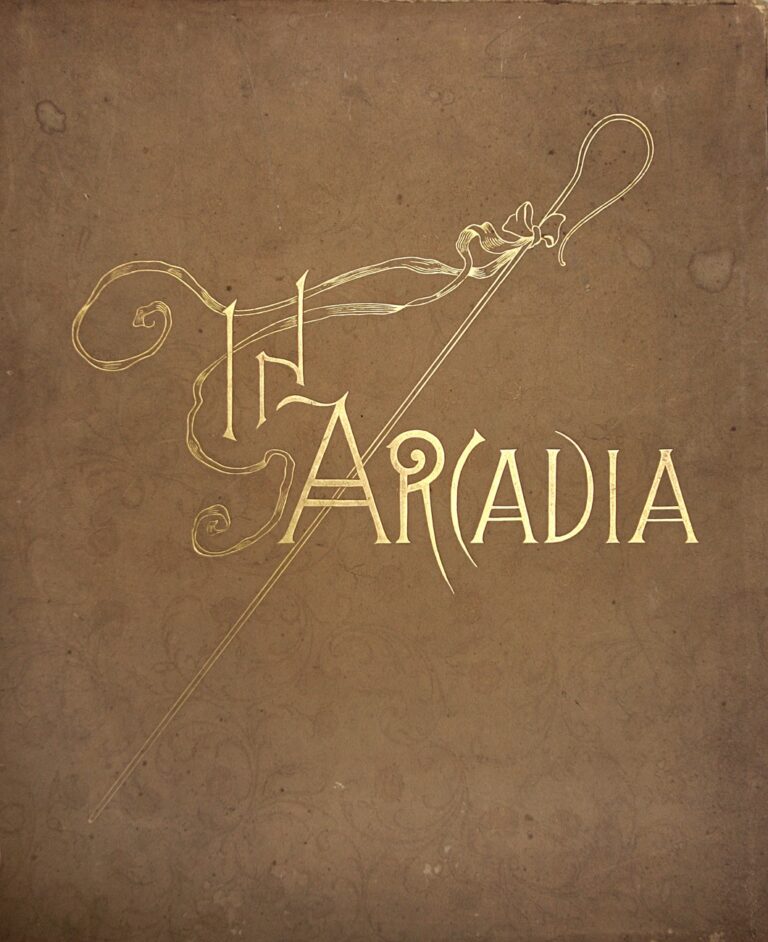
To-Morrow will be Friday
Copyrighted in 1891 by John Dumont, To-Morrow will be Friday shows a monk holding up a freshly caught fish, his Catholic faith dictating penance for his Friday supper.
Editorial comment for this plate:
Our Illustration.—In asking Mr. John E. Dumont for a few facts about his picture of “To-Morrow will be Friday,” which we present with this number, we obtain from him his ideas, expressed as follows:
“It is much easier for me to make pictures than it is to write about them.
I have no interest in the scientific side of photography only in so far as it helps me to make a picture; the camera is to me simply a means to an end. I am only interested in the art side, and in making a picture I try as much as possible to avoid those points that the professional photographer considers of absolute importance.
No professional photographer considers a picture worth looking at unless every object, however unimportant, is of pin-point sharpness, unless every shadow is transparent. Every line must be retouched ; every feature must be lighted just so, or it is a failure. Yet a painter never looks at those points ; he is after an effect, and if to get it it is necessary to put every object out of focus, he does it, and that is the end of it. If they want to put one face with its back towards the sun, they do that also, and no one questions their right. Then why should not the man who uses the lens instead of the brush have the same privilege? Surely, I can see none.
In making this picture I have tried to photograph it so as to get the same effect that an artist would who used canvas and paints. The figure is bold and sharp because that is the principal object, the background is indistinct and hazy because that is simply an accessory; were the trees in the distance sharp as the lens could make them, they would lead the eye from the motive of the picture.
“To-Morrow will be Friday” was made late one October afternoon, and is one of six pictures that I have made of this same model—who, by the way, is one of the best that I have ever worked from, as he enters into the spirit of the picture, and unless the model appreciates the idea that is to be carried out, it is impossible to make a successful genre picture with a camera, as, unlike the artist with the brush, no change can be made.
I expect that the day will come when photography will be classed as an art; but if that day ever should come, it will be because the amateur has departed from the rules laid down in the photograph gallery, which rules have been followed without change ever since the days of Daguerre.” (pp. 109-10)



